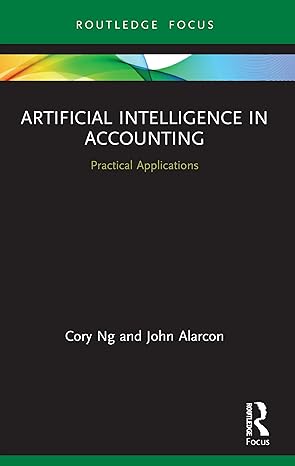Question
Scenario 1 Analyse the given real-life scenario and apply the correct approach of Activity-based costing to compute the unit cost of each productand set effective
Scenario 1
Analyse the given real-life scenario and apply the correct approach of Activity-based costing to compute the unit cost of each productand set effective price by considering the profit margin.
GEEPAS is an electronics equipment company based in Dubai, United Arab Emirates producing consumer electronic and household items. Company produces 300,000 units of LED TVs and 100,000 units of Mobile Phones in a year.
LED TVs
- Setups = 200 setups for producing 300,000 units of LEDs
- Direct expenses = $50,000
- Material Moves = 1,000,000 material moves for producing 300,000 units of LEDs
- Direct Labour = 100 direct labours with a salary of $2500 for each labour.
- Machine Hours = Machine A is using 132,000 Hours for producing 300,000 units of LEDS
- Direct Materials = Company is using 2000 units of materials @ $500 per unit.
- Profit Margin = 20% of Unit cost.
- Discount Margin = 5% total cost.
Mobile Phone
- Setups = 100 setups for producing 100,000 units of Mobile Phones.
- Direct expenses = $84,000
- Material Moves = 200,000 material moves for producing 100,000 units of Mobile Phones.
- Direct Labour = 100 direct labours with a salary of $1560 for each labour.
- Machine Hours = Machine A is using 88,000 Hours for producing 100,000 units of Mobile
Phones
- Direct Materials = Company is using 2000 units of materials @ $130 per unit.
- Profit Margin = 20% of total cost.
- Discount Margin = 5% Unit cost.
Common informations for LED TVs and Mobile Phones
- Total Setups cost for LED TVs and Mobile Phones = $55,200.
- Total Material Moves cost for LED TVs and Mobile Phones= $600,000
- Total Machine Hours cost for LED TVs and Mobile Phones = $660,000
From the above data of GEEPAS Company, compute the following.
- Calculate the unit cost of both products using an activity-based costing approach.
- Calculate profit per unit for both products.
- Calculate selling price per unit for both products.
- Calculate discount per unit for both products.
- Calculate discounted selling price per unit for both products.
Step by Step Solution
There are 3 Steps involved in it
Step: 1

Get Instant Access to Expert-Tailored Solutions
See step-by-step solutions with expert insights and AI powered tools for academic success
Step: 2

Step: 3

Ace Your Homework with AI
Get the answers you need in no time with our AI-driven, step-by-step assistance
Get Started


